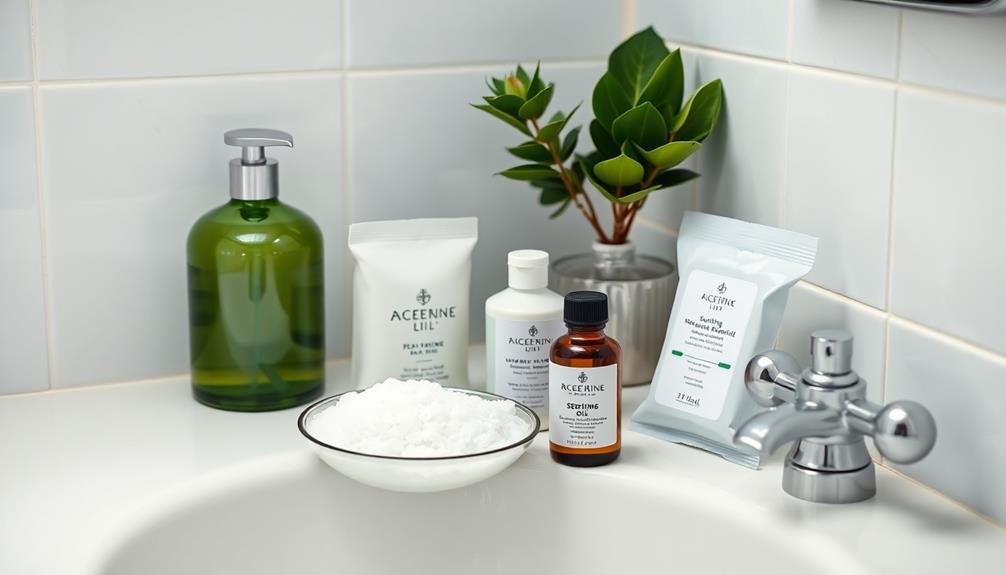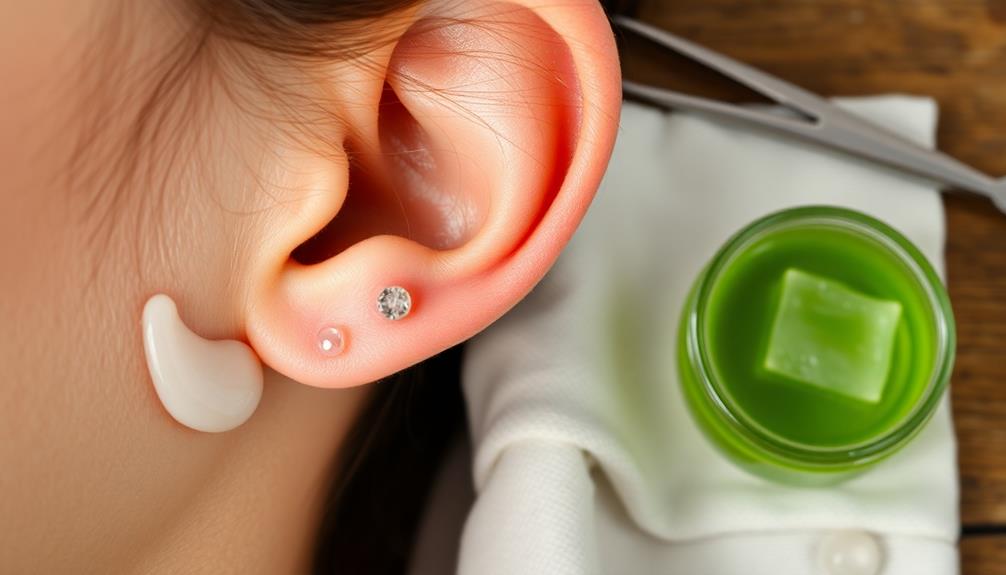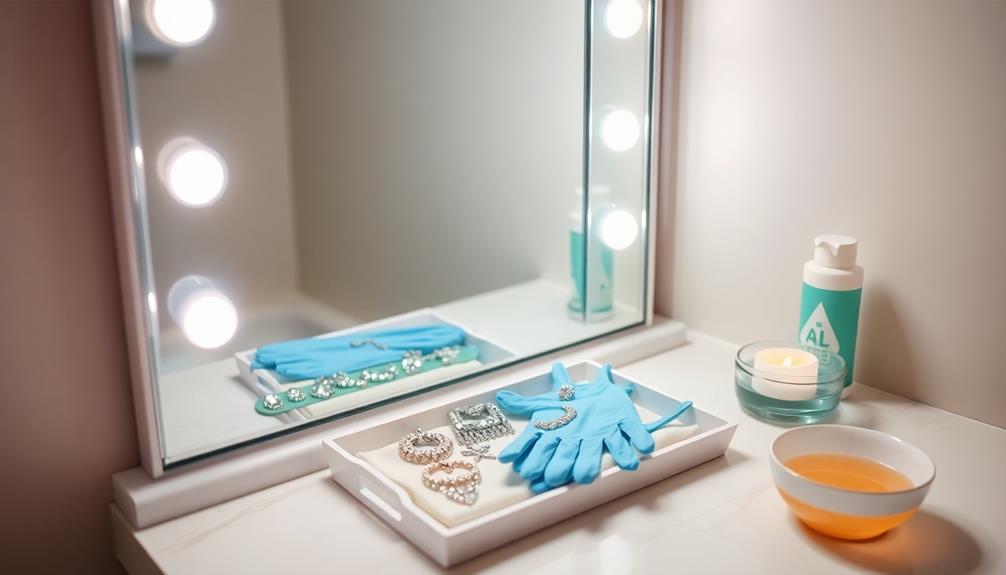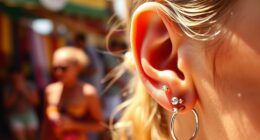Exercising with fresh piercings requires caution. Wait 2-3 days before starting light workouts and avoid high-impact activities for at least two weeks. Choose loose-fitting clothing to prevent chafing and irritation. Always clean your piercing with saline solution post-workout to minimize infection risk. Be mindful of any discomfort or signs of infection, such as redness or swelling—if you notice these, adjust your routine accordingly. Disinfect gym equipment before and after use to limit bacteria exposure. Following these dos and don'ts will help promote healing, and you might find even more helpful tips as you explore further.
Key Takeaways
- Wait 2-3 days before starting light exercise to allow initial healing of the piercing.
- Wear loose-fitting clothing to prevent chafing and irritation around the piercing.
- Clean the piercing with a saline solution after each workout to reduce infection risk.
- Avoid high-impact sports and heavy workouts for at least two weeks post-piercing.
- Monitor for signs of infection and modify your routine if discomfort occurs during or after exercise.
Safety Precautions for Exercising

When you get a fresh piercing, taking safety precautions during exercise is vital. To protect your new piercing, avoid high-impact sports like boxing or wrestling for at least two weeks. This minimizes irritation and the risk of snagging or injury.
You should wait 2-3 days before engaging in any light exercise, carefully monitoring any discomfort or irritation during this time.
When you do start exercising, choose loose-fitting clothing that doesn't rub against the pierced area to prevent chafing. If necessary, cover your piercing with breathable fabric, but steer clear of adhesive bandages that restrict airflow; they can trap moisture and increase the risk of infection.
After your workout, it's important to clean your piercing using a saline solution. This helps remove sweat and bacteria, reducing the likelihood of infection.
Timing Your Workouts
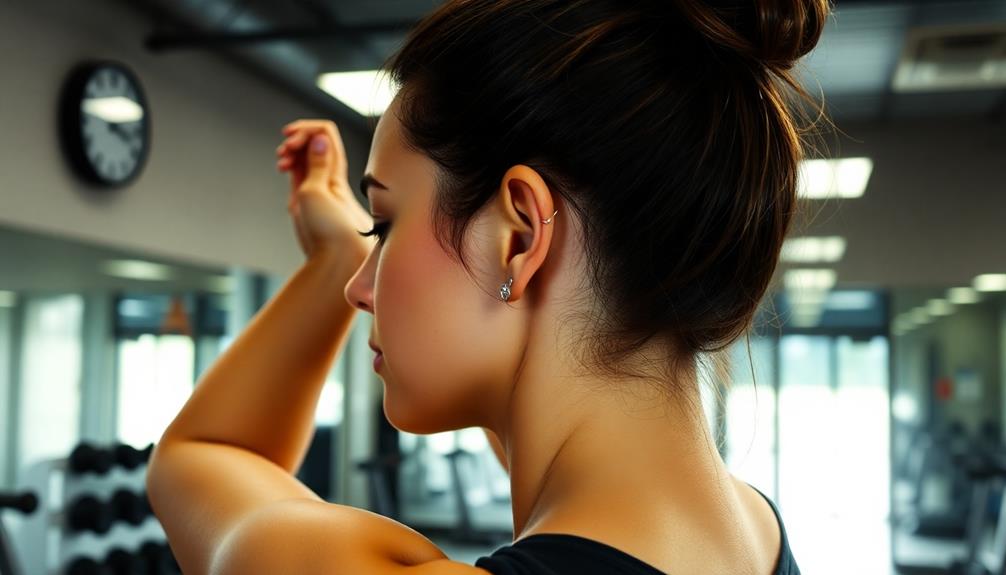
After ensuring you've taken the necessary safety precautions, it's time to think about how to time your workouts effectively. When you get a new piercing, remember that your healing time is vital for keeping your piercing intact.
Start by waiting at least 2-3 days before engaging in light exercise to allow for initial healing. During the first week post-piercing, focus on low-intensity activities to minimize strain. It's important to avoid heavy workouts for at least two weeks to prevent irritation and complications.
Pay attention to your body's signals; if you experience discomfort or irritation around the piercing site, discontinue exercise immediately. As you start to feel better, you can gradually reintroduce your normal workout routine, but be mindful of the type and location of your piercing.
Here's a quick guide to help you plan:
| Timeframe | Recommended Activities | Notes |
|---|---|---|
| First 2-3 Days | Light Exercise | Focus on low-intensity activities |
| 1 Week Post-Piercing | Gradually increase intensity | Monitor for discomfort |
| 2 Weeks Post-Piercing | Normal workouts | Avoid heavy workouts |
| Ongoing | Listen to your body | Adjust as necessary |
Choosing Appropriate Clothing
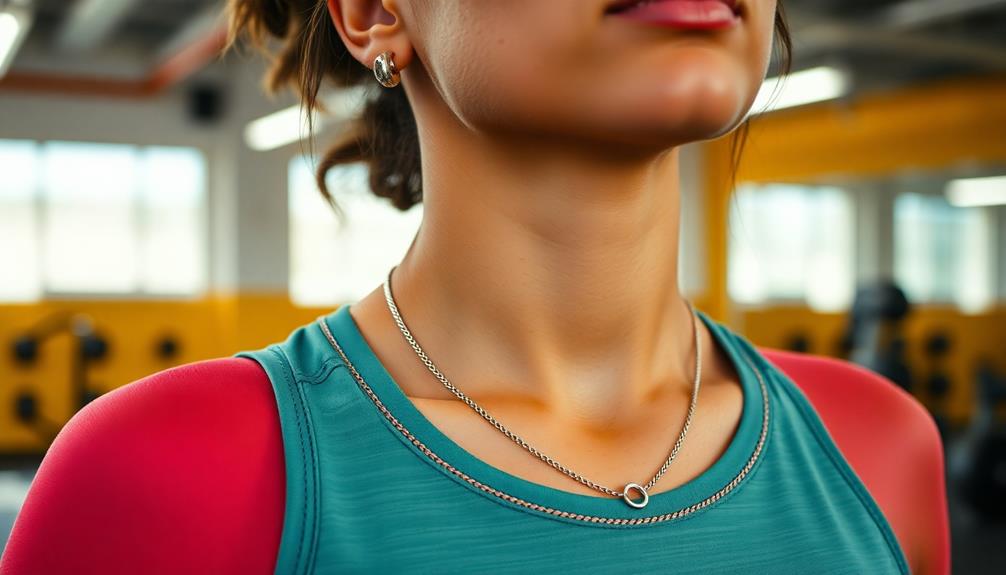
Choosing the right clothing is essential for ensuring comfort and promoting healing after getting a fresh piercing. Opt for loose-fitting clothing to prevent chafing and irritation around your newly pierced areas. Tight fabrics can cause discomfort and hinder the healing process, so prioritize soft, comfortable options.
If you have nipple piercings, consider wearing a crop top that minimizes movement while allowing for breathability. Avoid sports bras that may irritate your nipple piercings; instead, choose supportive yet gentle alternatives that don't apply excessive pressure.
When selecting workout gear, aim for fabrics that provide freedom of movement, like stretchy materials that accommodate any restrictions from your piercing.
If your usual workout attire feels too snug, don't hesitate to adjust to looser options like sweatpants instead of tighter yoga pants to avoid friction on the piercing.
Essential Hygiene Practices
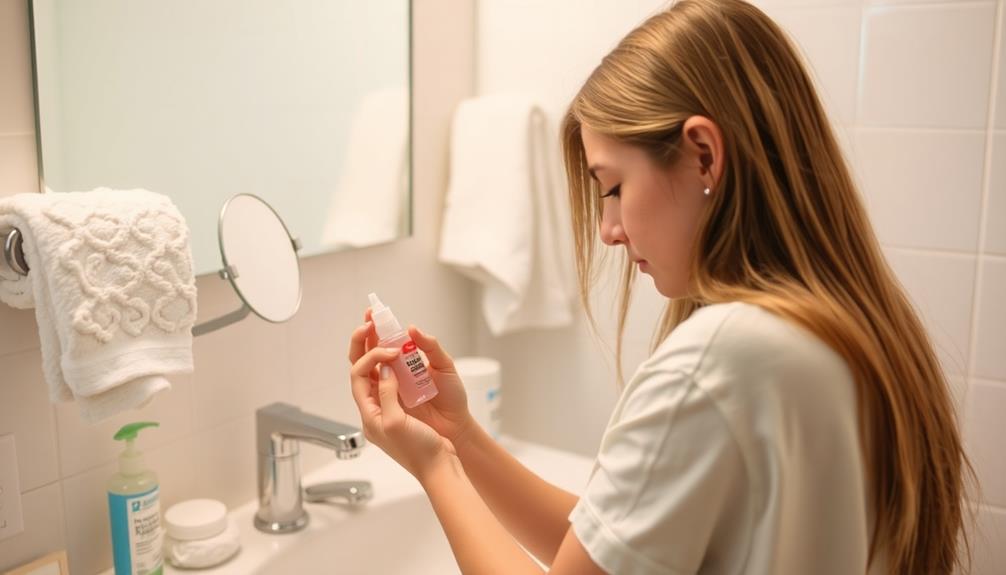
Maintaining proper hygiene is essential for the healing process of your fresh piercings, especially when you're engaging in physical activities.
Here's what you should do to guarantee your piercings stay clean and infection-free:
- Clean your piercings: After each workout, use a saline solution or mild soap to thoroughly clean your piercings. This helps eliminate bacteria introduced by sweat and exercise equipment.
- Disinfect equipment: Always disinfect any shared gym equipment before and after use. This simple step minimizes the risk of bacteria coming into contact with your healing piercings.
- Shower immediately: Take a shower right after exercising to wash away sweat and bacteria. Be sure to dry your piercings gently and thoroughly to prevent irritation.
While working out, avoid touching your piercings to prevent transferring bacteria from your hands.
If accidental contact happens, a travel-sized saline spray can be a lifesaver for quick cleaning.
Monitoring Healing Progress
Monitoring your piercing's healing progress is vital for guaranteeing a smooth recovery. During the initial healing phase, which can last from 6 to 12 weeks, keep an eye out for signs of infection, such as increased redness, swelling, or pus-like discharge.
Regularly assess the area around your piercings for any unusual discomfort or irritation, especially after exercise. If you notice increased pain or irritation, it might be time to modify your workout routine.
Documenting your healing progress can be incredibly helpful. Maintain a log of any symptoms or changes, so you can share this information with your piercer during follow-up appointments. This will help them provide tailored care and advice for your situation.
Hydration and nutrition are also vital components of healing. Make sure you're consuming a balanced diet and staying well-hydrated to support your body's recovery during this vital period.
Frequently Asked Questions
Can I Workout With a Fresh Piercing?
You can start light workouts 2-3 days after getting your piercing, but it's best to avoid heavy exercises for at least two weeks. Always listen to your body and watch for any irritation.
What Activities to Avoid After Ear Piercing?
After getting your ears pierced, avoid high-contact sports, swimming, and activities that stretch your neck. Steer clear of tight hats or headphones that may irritate the area, and always clean gym equipment before use.
How to Workout With a New Belly Button Piercing?
Wondering how to stay active with a new belly button piercing? Wait a few days, stick to low-impact exercises, wear loose clothing, and always clean the area post-workout to prevent irritation and infection.
Is It Safe to Workout After a Belly Piercing?
You should wait at least two weeks before engaging in heavy workouts after your belly piercing. Light exercises can start sooner, but protect the area and keep it clean to avoid complications during healing.
Conclusion
Exercising with fresh piercings can feel intimidating, but it doesn't have to sideline your fitness goals. By following the dos and don'ts, you can safely stay active while your body heals. Remember, it's all about listening to your body and making smart choices. Don't let the fear of irritation hold you back—staying fit can actually promote better healing! So lace up those sneakers and embrace your routine, just with a little extra care for your new piercings!
Hi, my name is Danielle, and I’m an author for piercings-body.com. I have a passion for writing and love to share my knowledge on all things body piercing-related. I’m also a huge advocate for safe body modification practices and believe everyone should be able to make informed decisions about their bodies. When I’m not writing or blogging, I enjoy spending time with my family and friends, practicing yoga, and exploring new places.


